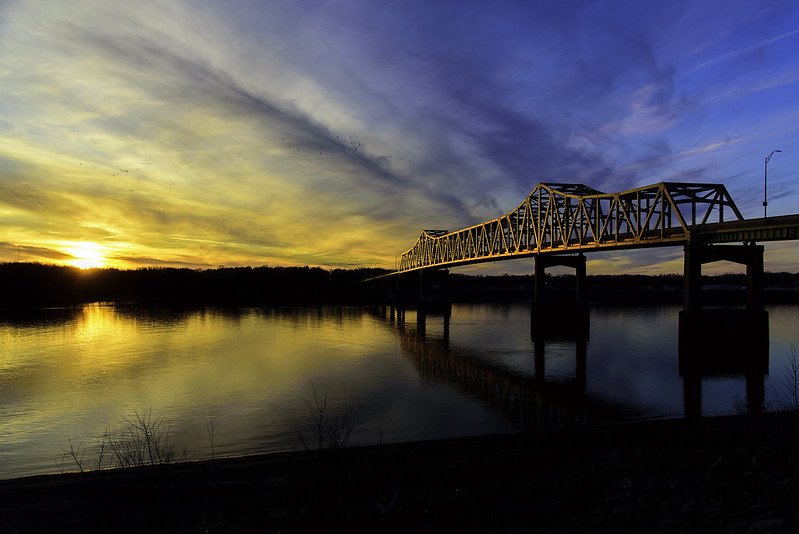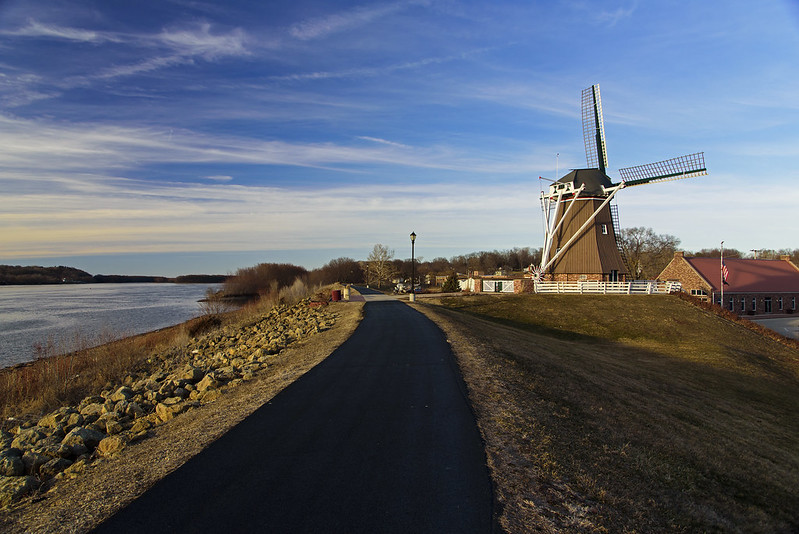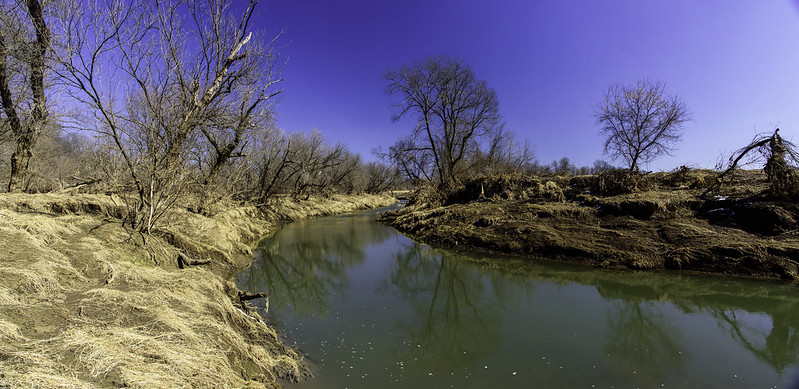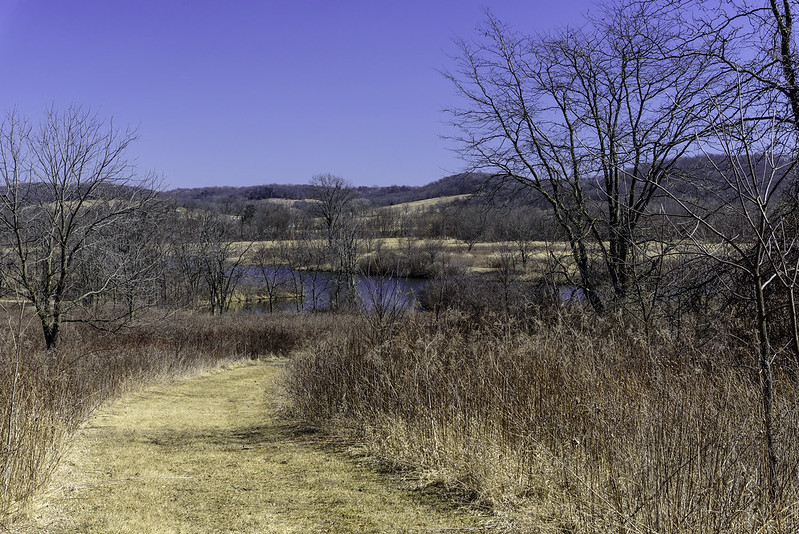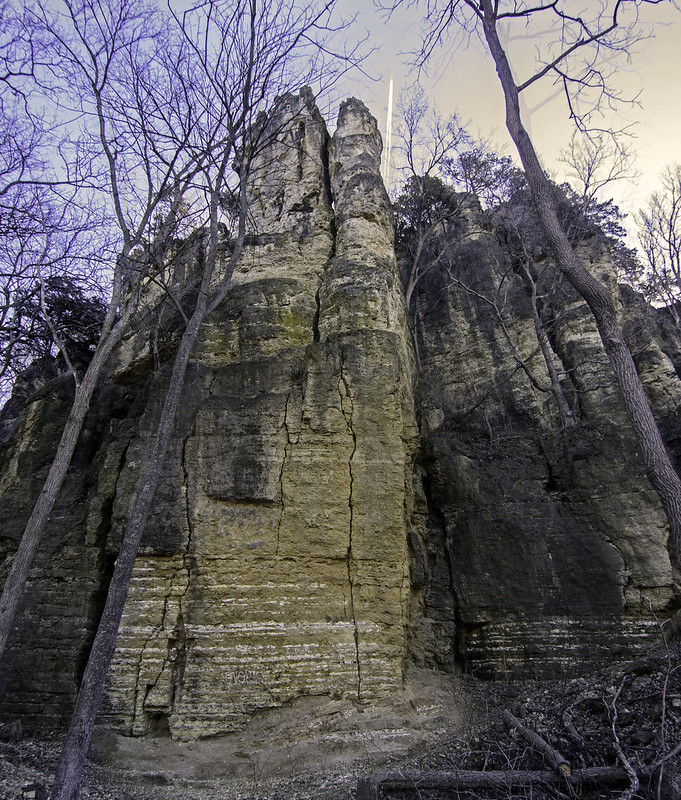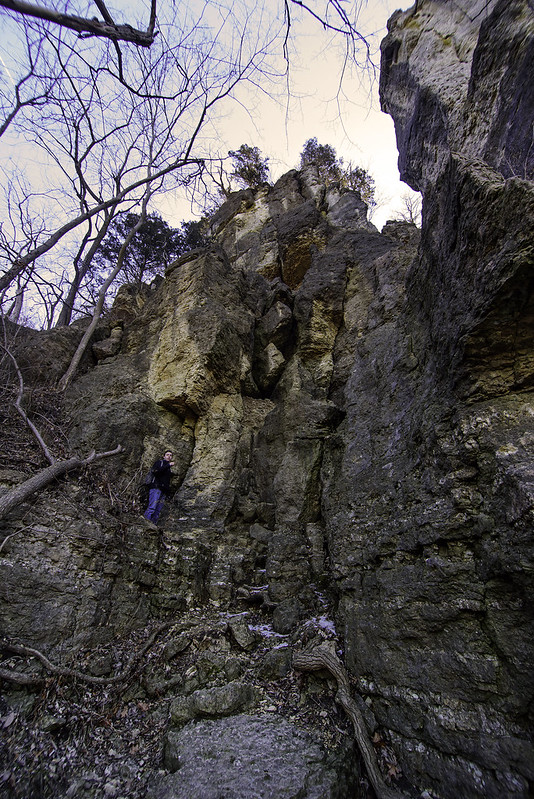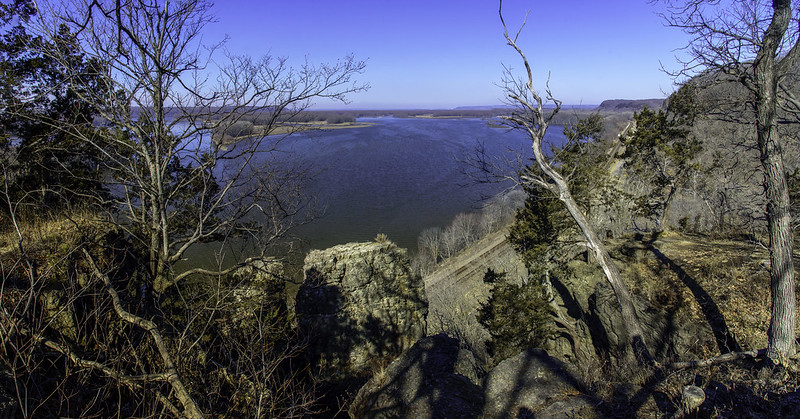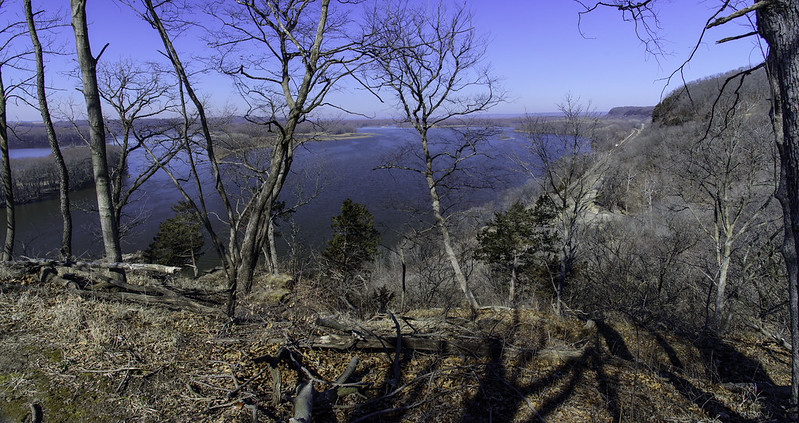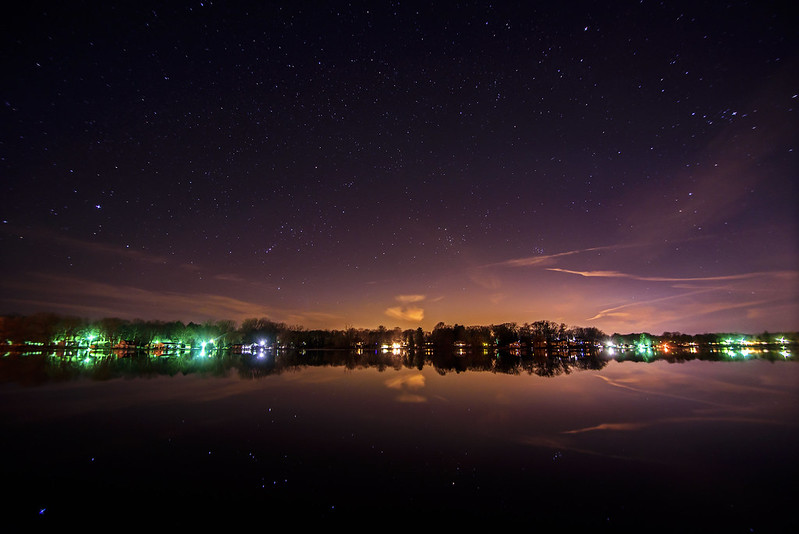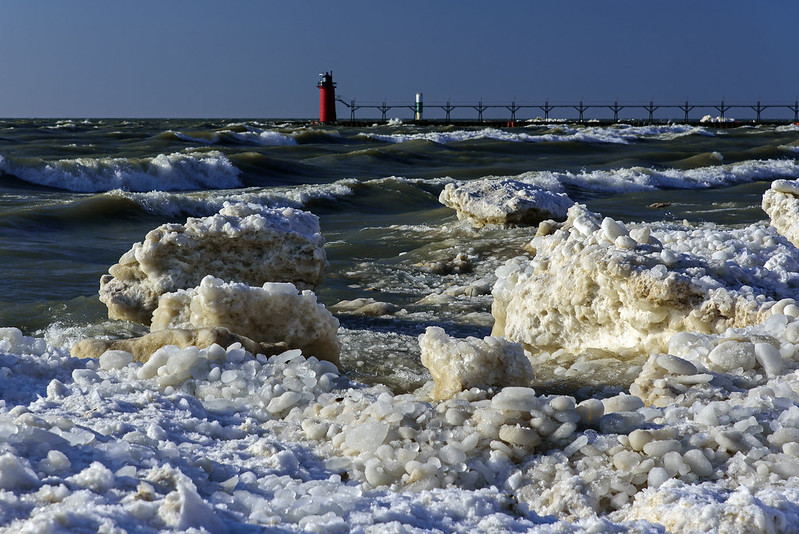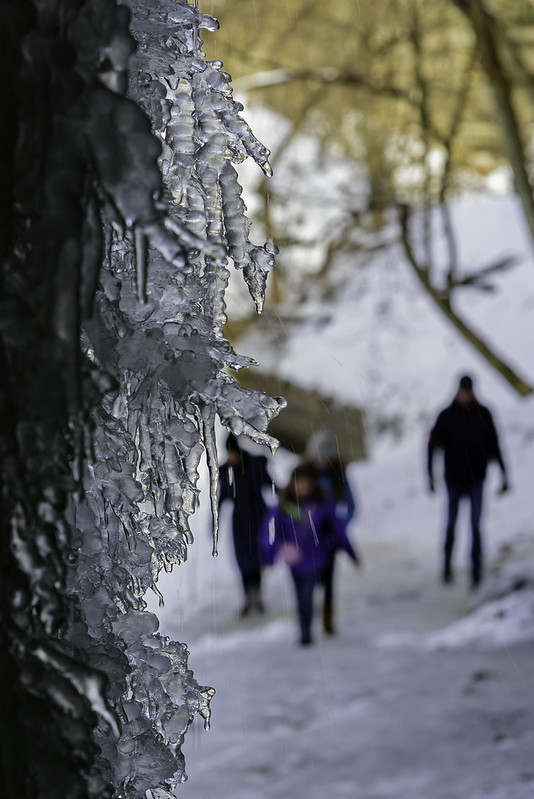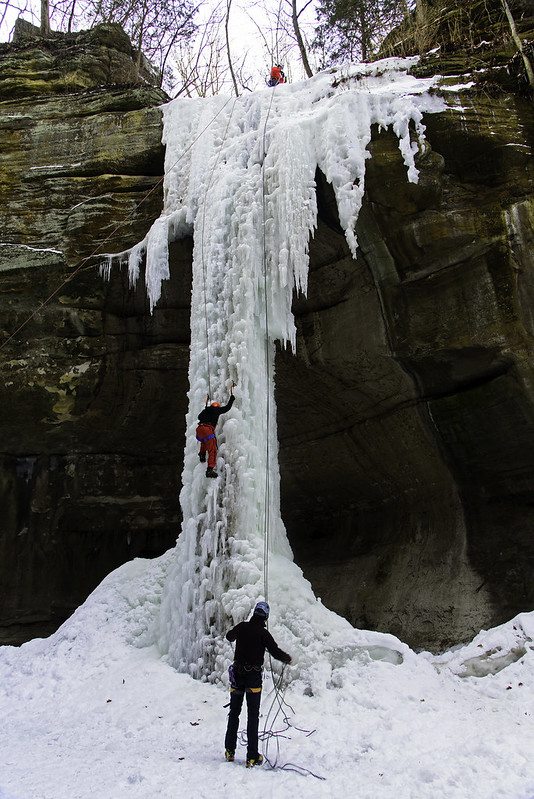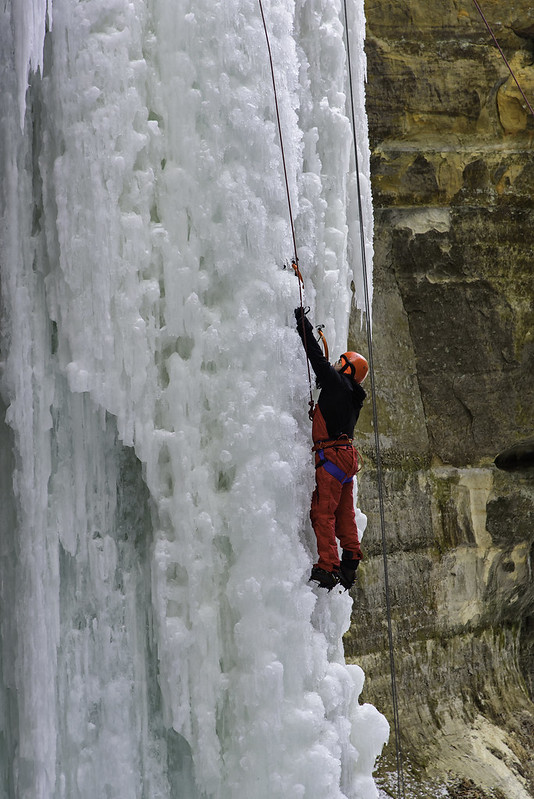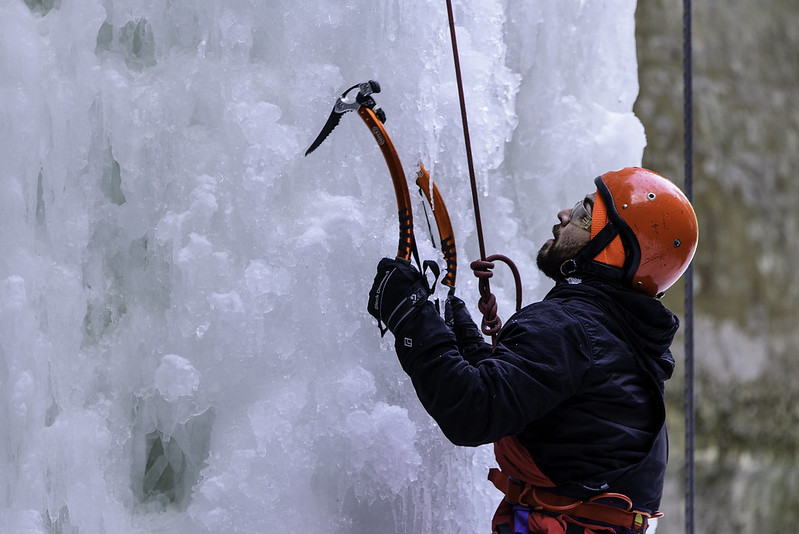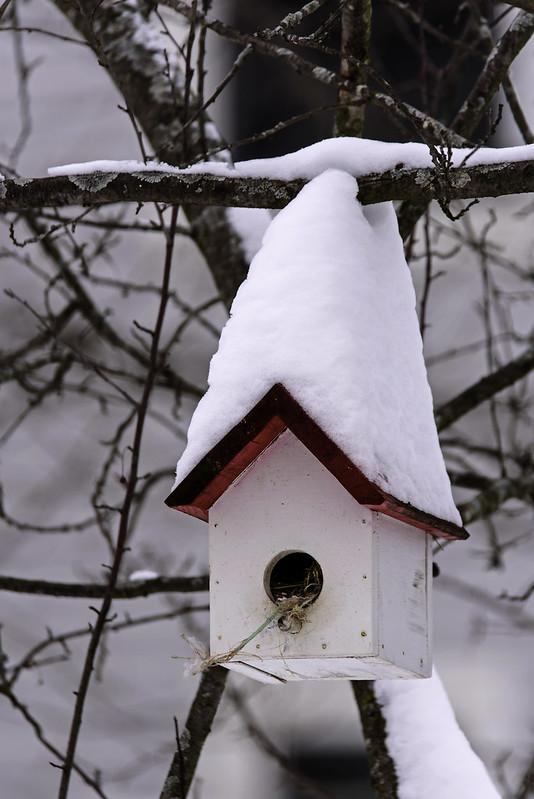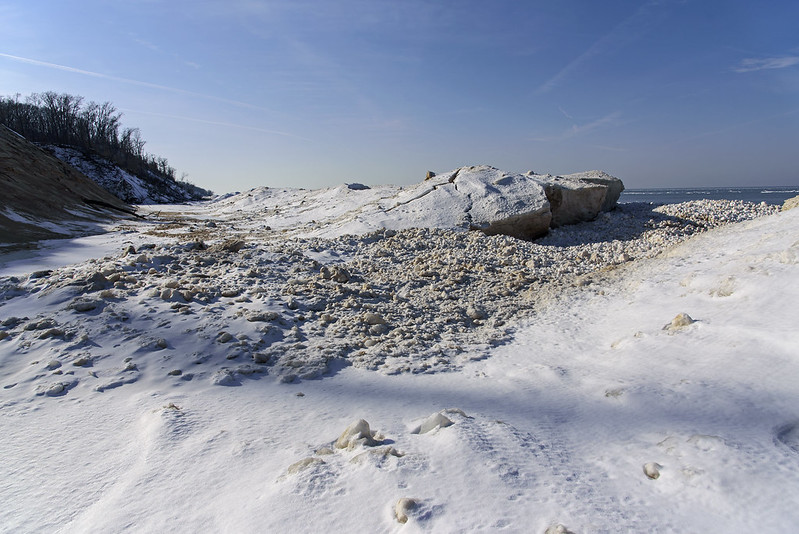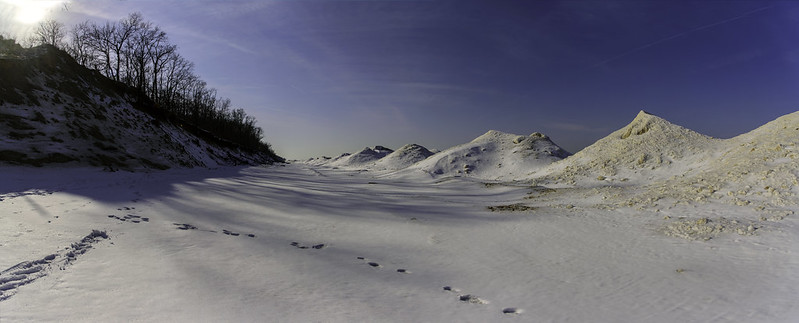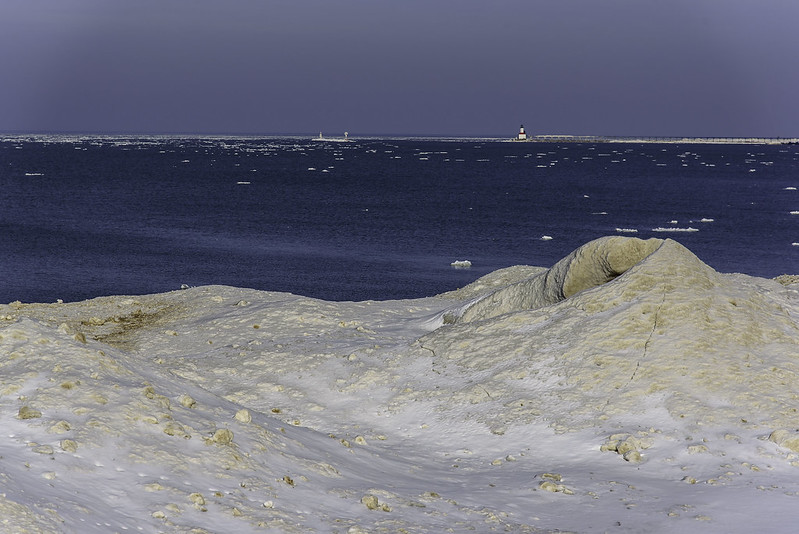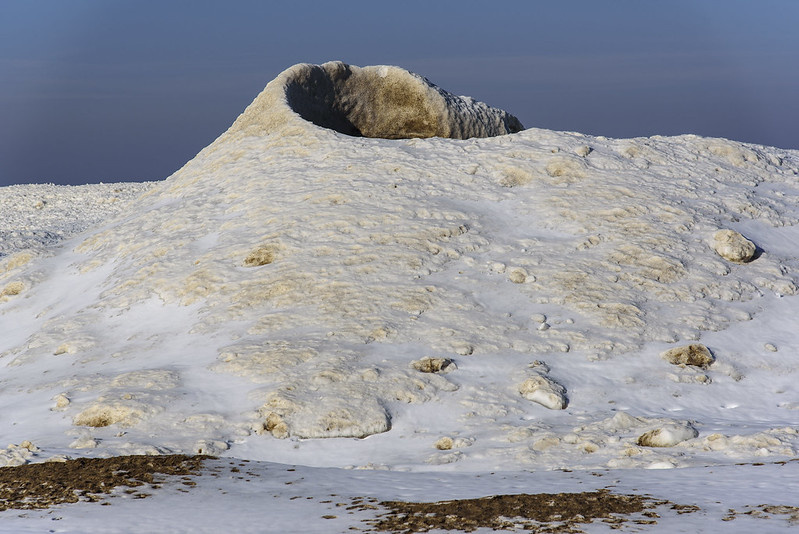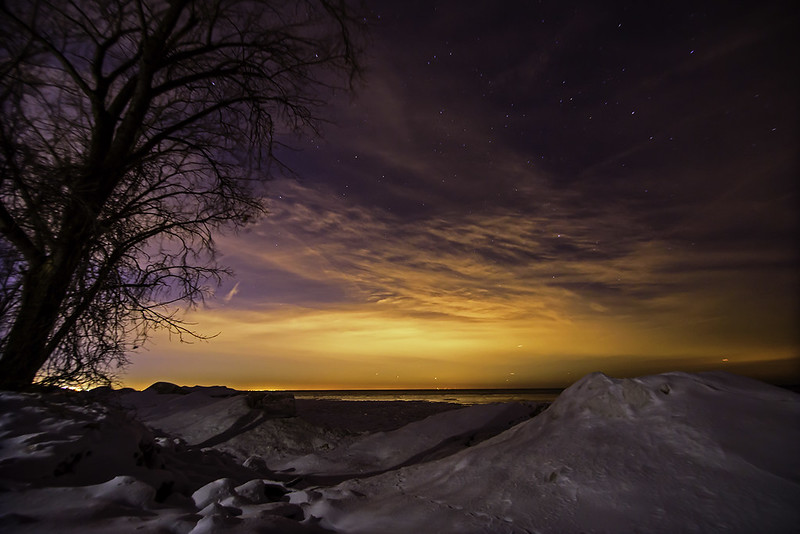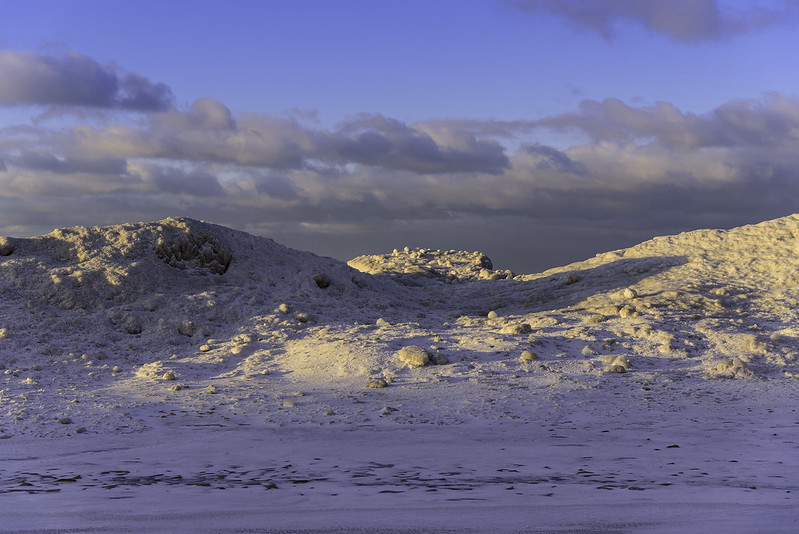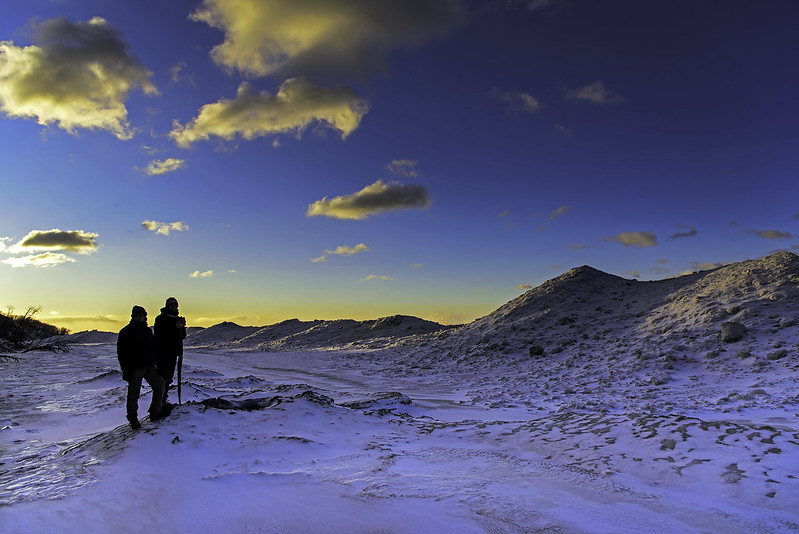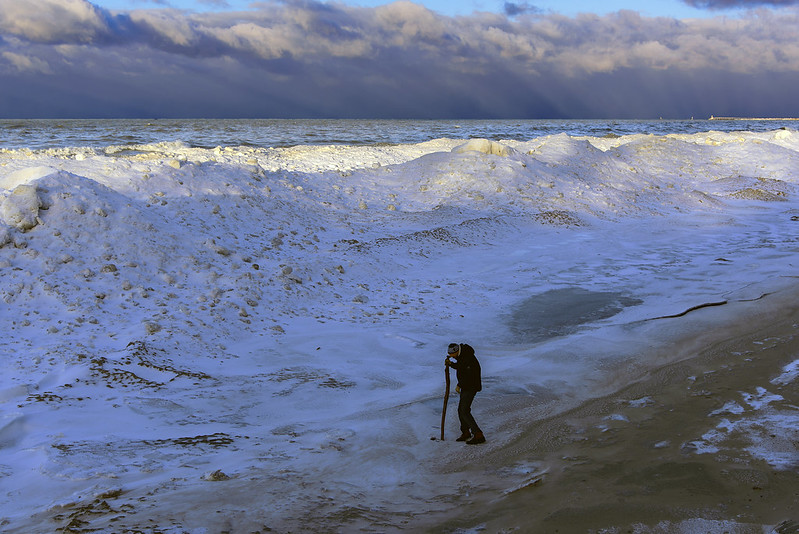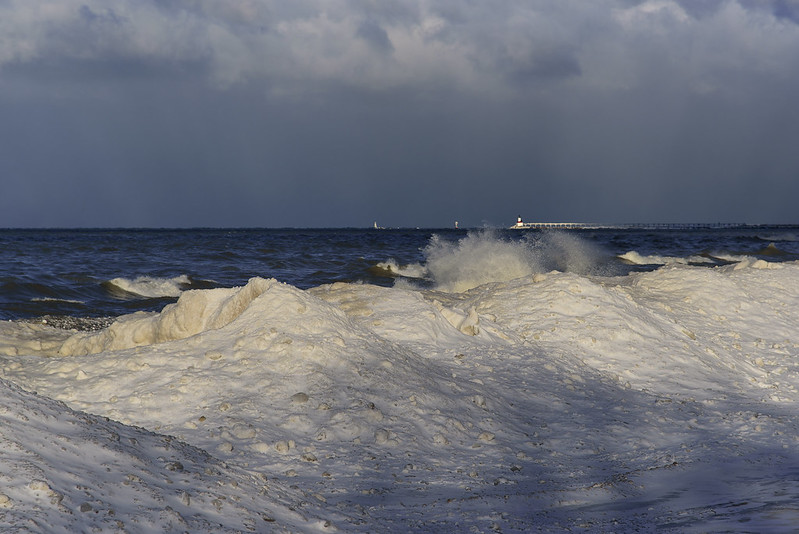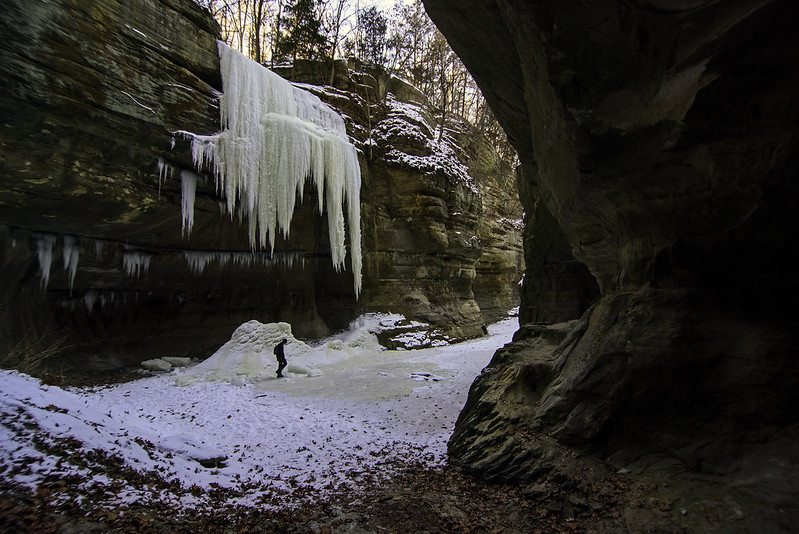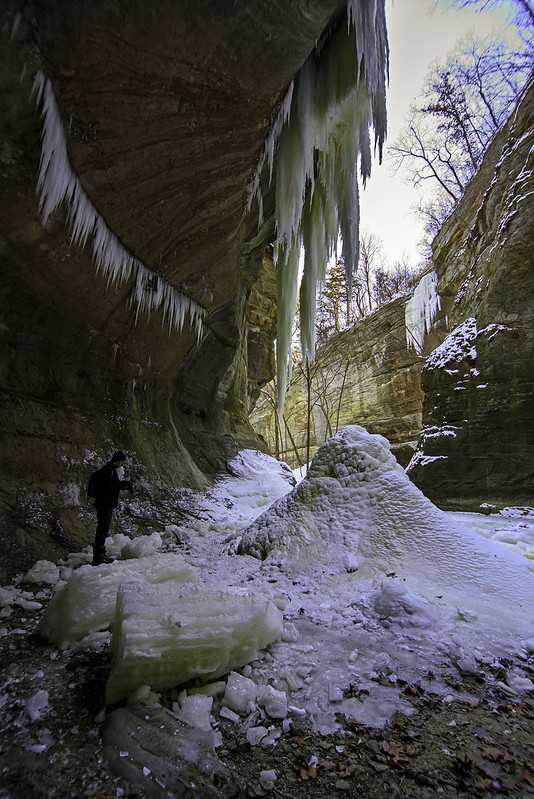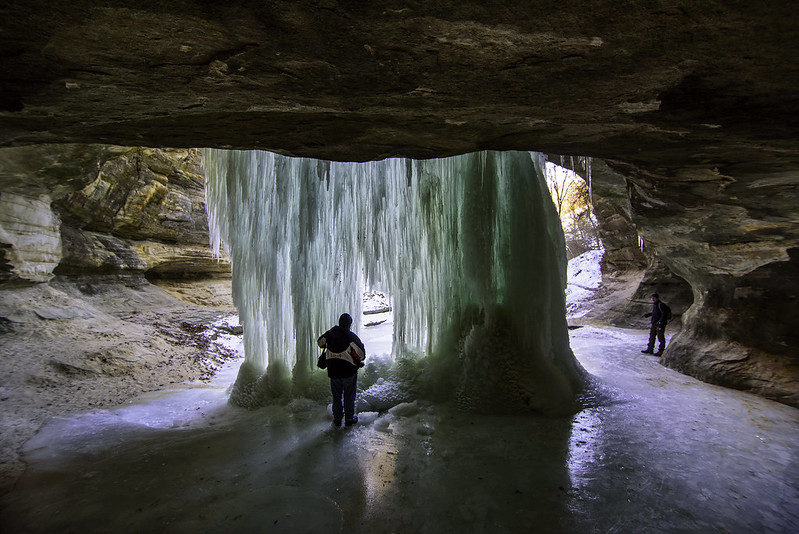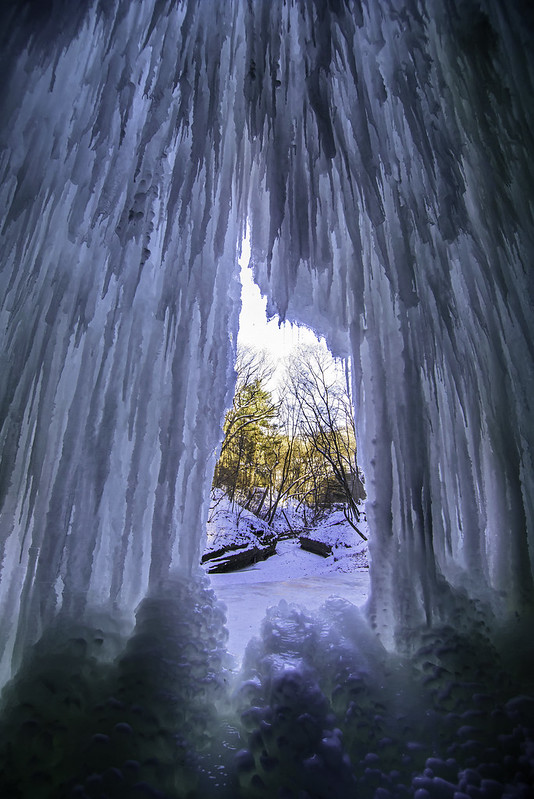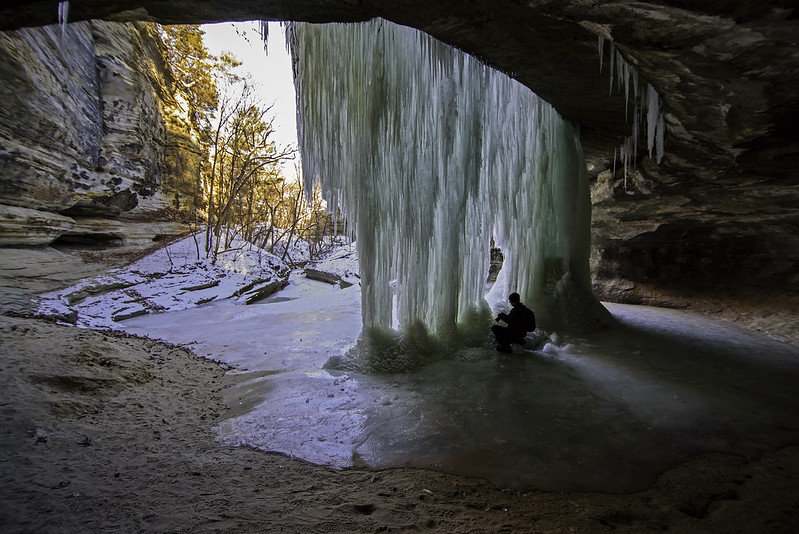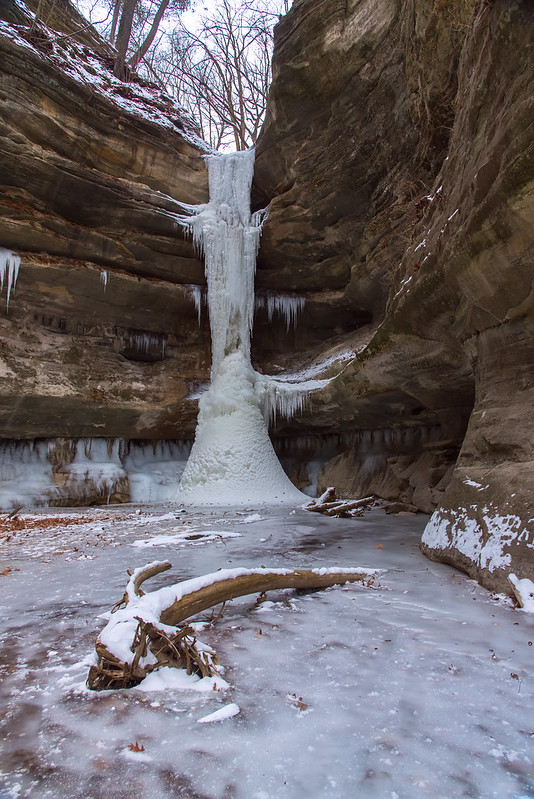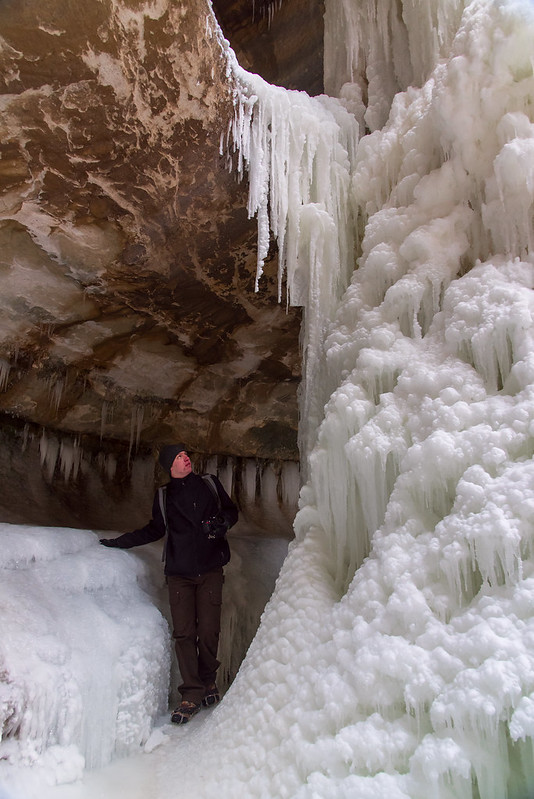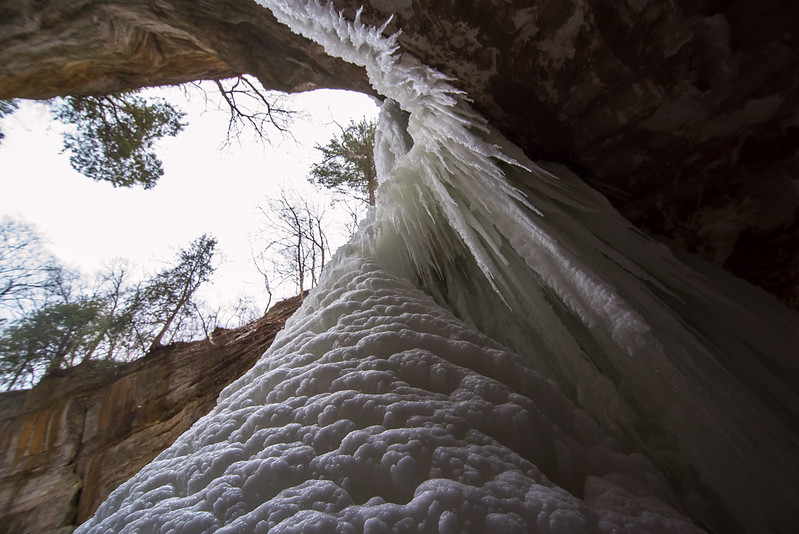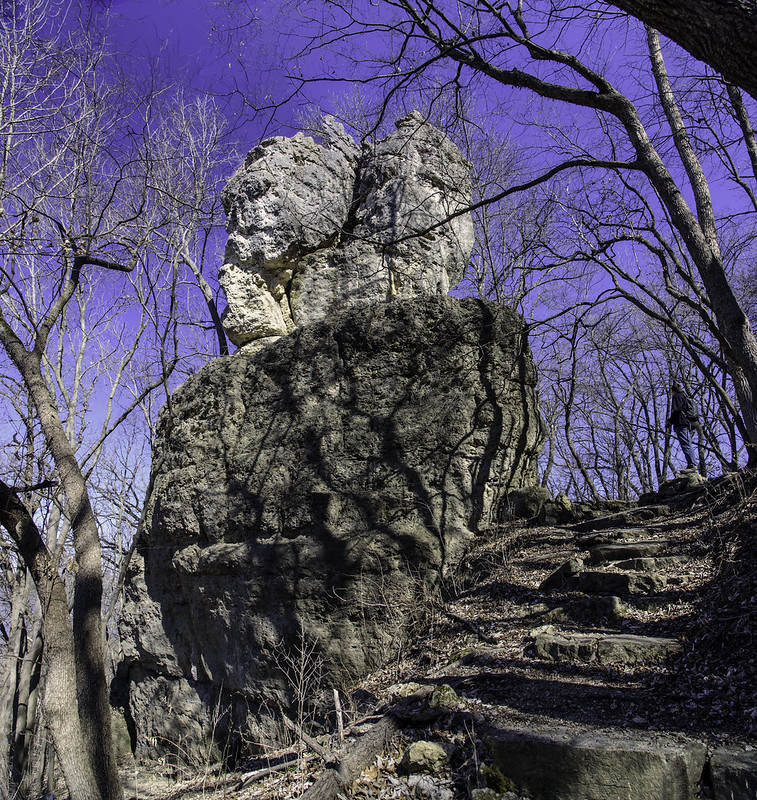
For some reason, the Twin Sisters rock formations were always elusive to us on our many trips to Illinois' Mississippi Palisades State Park. I've tried to find these formations a few times in the past, and each time I've missed them. I thought I followed every trail, but apparently not.
On this visit in winter, there were no leaves on the trees, allowing us to easily see these towering rocks from a distance. We spent a bit of time exploring the parts of this park we haven't yet seen. There is a lot more than I initially thought, and some very interesting things to see.
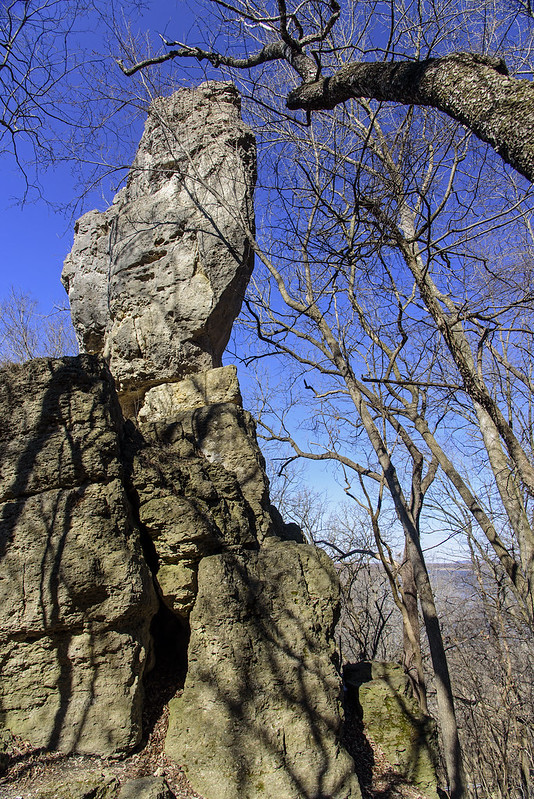
The Twin Sisters are described as two human-like towers of rock sticking out of the forested bluffs. Human-like is a bit of a stretch, but they are rather impressive when you stand near them.
Some of the trails leading to and around these formations seem quite old, and as I read a bit of the history on this area, Native Americans created many of these trails while hunting in the area. Of course, they were improved a bit over time for everyday hiking, but one trail in particular leading from the Twin Sisters to Upton's Cave (coming up in the next post) shows little modern improvements.

